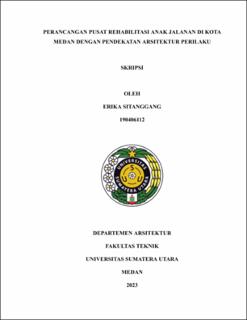| dc.description.abstract | This project is about the planning of the Street Children's Rehabilitation Center in
Medan City. The Minister of Social Affairs Regulation Number 16 of 2019 concerning the
National Standard of Social Rehabilitation, it is stated that Social Rehabilitation is a process of
re-functionalization and development so that a person can carry out his social functions well in
community life. And according to the Ministry of Social Affairs of the Republic of Indonesia
(1999), street children are children aged 18 years and under which are caused by several
factors, such as economics, family problems, and cultural factors that keep them on the streets.
The Street Children Rehabilitation Center referred to in this study is a rehabilitation center for
girls aged 15 to 18 years, where after the age of 18 they are ready to enter the workforce.
This street children rehabilitation center provides facilities in the form of refugee
camps, and studies, and helps improve the social skills of street children. The learning
program that will be given is in the form of formal and informal classes, informal classes in
the form of classes that teach skills in their fields such as sewing, cooking, gardening,
automotive, selling online, and graphic design.
The problem in designing this project is how to make these children comfortable and
not feel constrained, to build their interaction with the active lifestyle of street children. This
problem underlies the use of the Behavioral Architecture approach. Behavioral architecture is
an architecture that is designed by following aspects of human behavior in it. In this case, the
Behavioral Architecture Approach becomes the main foundation in the Design of the Street
Children Rehabilitation Center which makes the roles of architectural design and the use of
street children interconnected. | en_US |


